HPC Jobs Report 2025: Is AI a Jobs Killer or Jobs Savior?
AI and High‑Performance Computing
Myth vs Reality: AI Displacement or Creation?
The global economy faces a paradox. After years of tech layoffs and slowing recruitment, the 2025 job market looks bleak for many graduates and mid‑career professionals. Headlines warn that artificial intelligence (AI) will automate away work, leaving millions unemployed. Yet studies from the World Economic Forum paint a different picture.
Surveys of over 1,000 large employers project that AI will create around 170 million new jobs by 2030 while displacing about 92 million[1]. Far from a doom‑and‑gloom scenario, AI‑driven innovation is on track to generate a net 78 million new roles[2].
This article explores why high‑performance computing (HPC)—the backbone of AI—will be a major driver of those roles, not a destroyer of careers.
For readers in the crypto community, the stakes are especially high. Recent Bitcoin “halving” events have cut mining rewards, pressuring profitability. Many miners are pivoting to AI‑focused data centers, turning their GPU‑rich facilities into HPC engines.
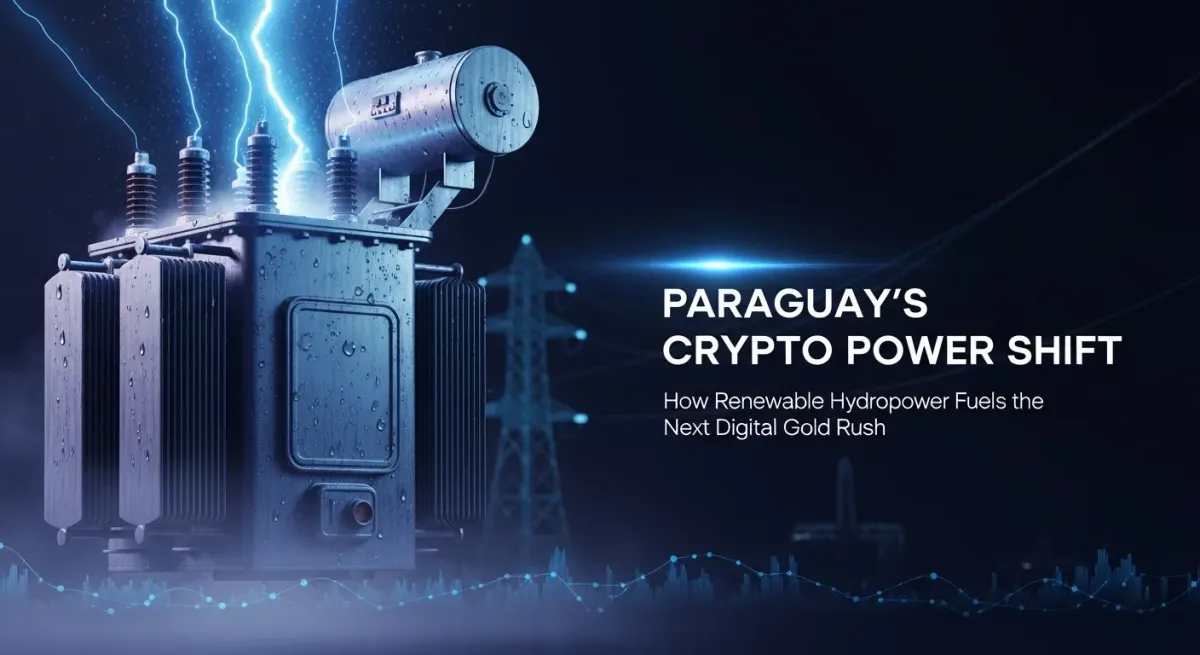
Learn About the Cheapest HPC Power in the World
Remember upgrading from dial‑up to fiber‑optic internet? That’s the leap these firms are making by repurposing their rigs for AI training. The pivot is about more than technical hardware; it changes livelihoods and regional economies.
Memphis, Tennessee, for example, welcomed a new Colossus supercomputer from Elon Musk’s xAI company. Local leaders expect it to create up to 500 high‑paying jobs in its first phase[10]. AI and HPC are not just abstract technologies; they are engines for employment and community development.
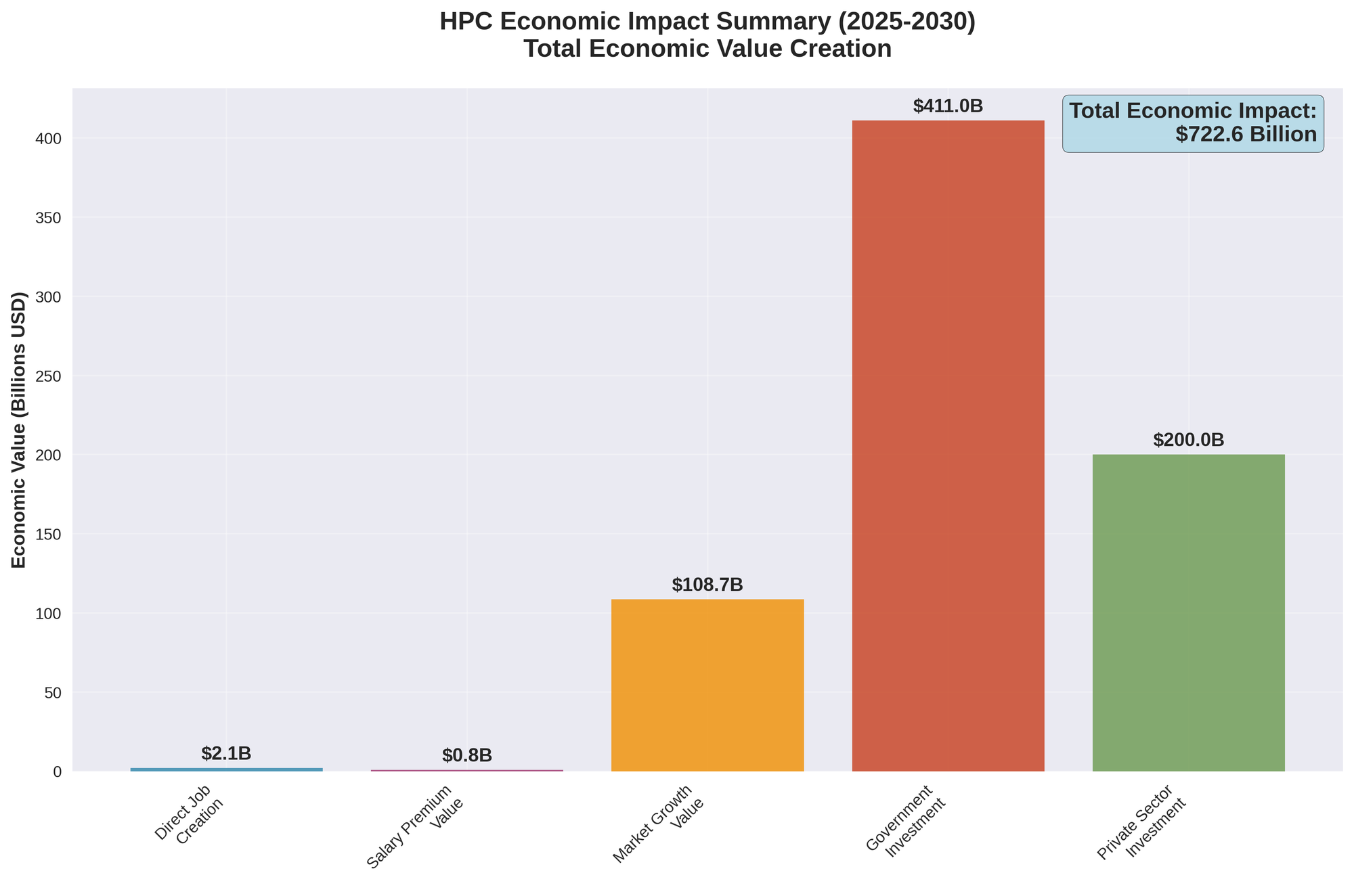
Why High‑Performance Computing Matters
High‑performance computing refers to the use of supercomputers and parallel processing techniques to solve problems that are too complex for standard systems. AI models rely on HPC infrastructure to train on vast datasets, simulate neural networks and deliver insights in real time.
Global demand for HPC has skyrocketed as industries adopt AI for everything from climate modeling to drug discovery.
Market researchers at Precedence Research estimate that the HPC market will grow from about $54.76 billion in 2024 to roughly $133.25 billion by 2034, a compound annual growth rate (CAGR) of about 9.3 percent[3].
Another study from Global Market Insights notes that the market was $38.38 billion in 2023 and is expanding at 6.5 percent annually[4].
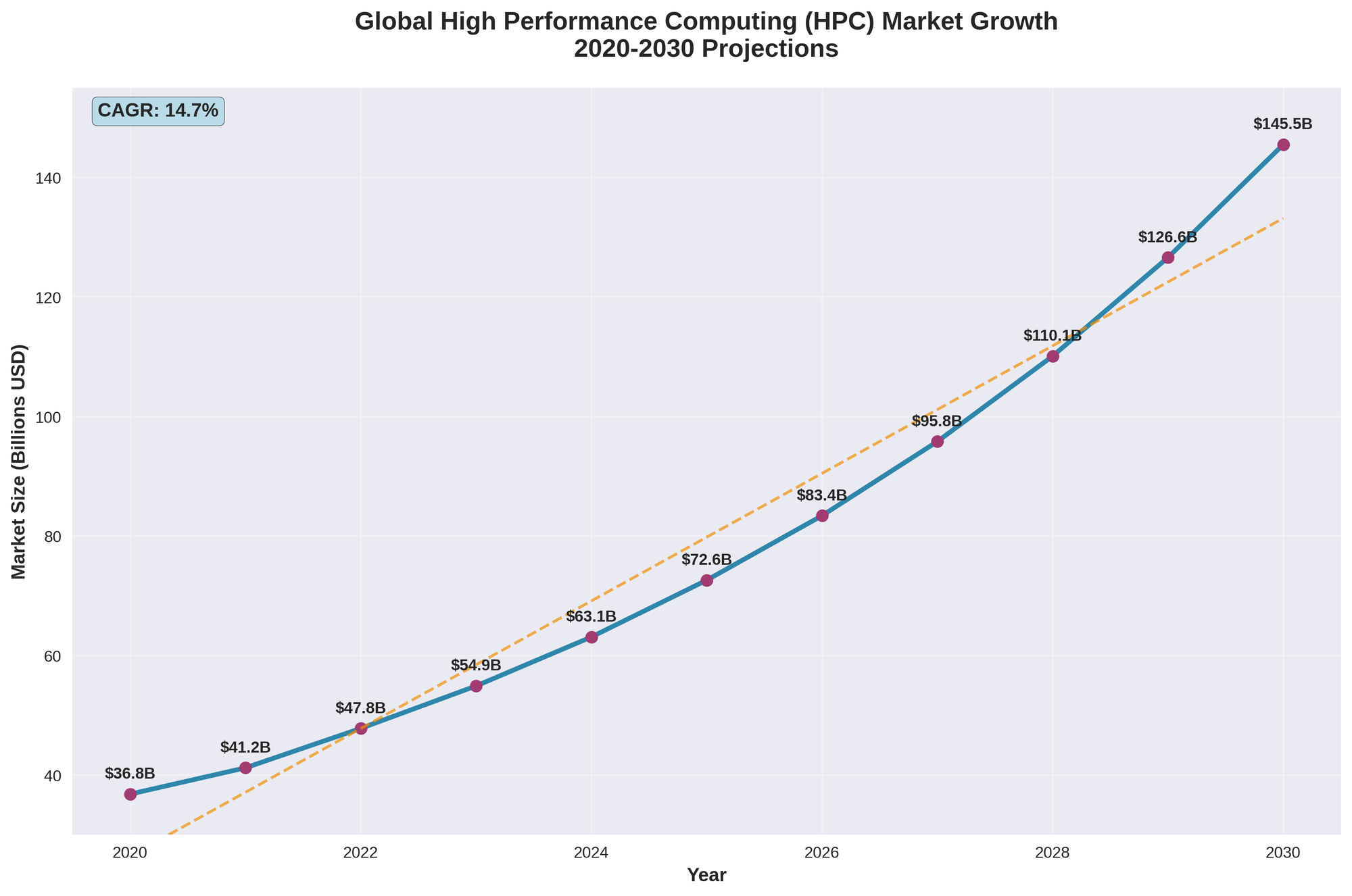
What is driving this growth? Researchers highlight three main factors:
- AI and Machine Learning integration. Sophisticated models demand immense computational power. HPC systems provide the parallel processing needed to train and run large language models, image recognition systems and autonomous control algorithms. Global Market Insights observes that the integration of AI and ML is pushing industries like healthcare, finance and autonomous vehicles toward HPC adoption[4].
- Cloud‑based accessibility. Cloud providers are democratizing HPC. Instead of building expensive on‑premises clusters, organizations can rent time on supercomputers. This pay‑as‑you‑go model makes HPC accessible to small start‑ups and academic labs. NIST reports that cloud solutions are allowing small and medium enterprises to scale up computational tasks quickly[4].
- Government and private investment. Legislation like the U.S. CHIPS and Science Act has poured more than $630 billion into semiconductor supply chains, supporting over 500,000 American jobs in facility construction, operations and supporting sectors[7]. The European Union’s EuroHPC and China’s exascale investments further drive demand for skilled workers who can design, operate and optimize supercomputers.
The significance for job seekers is clear: HPC is not a niche field reserved for physicists. It underpins AI, data science, crypto infrastructure and cloud services. Where computational demand rises, so do employment opportunities.
Busting the Myth of AI Job Destruction
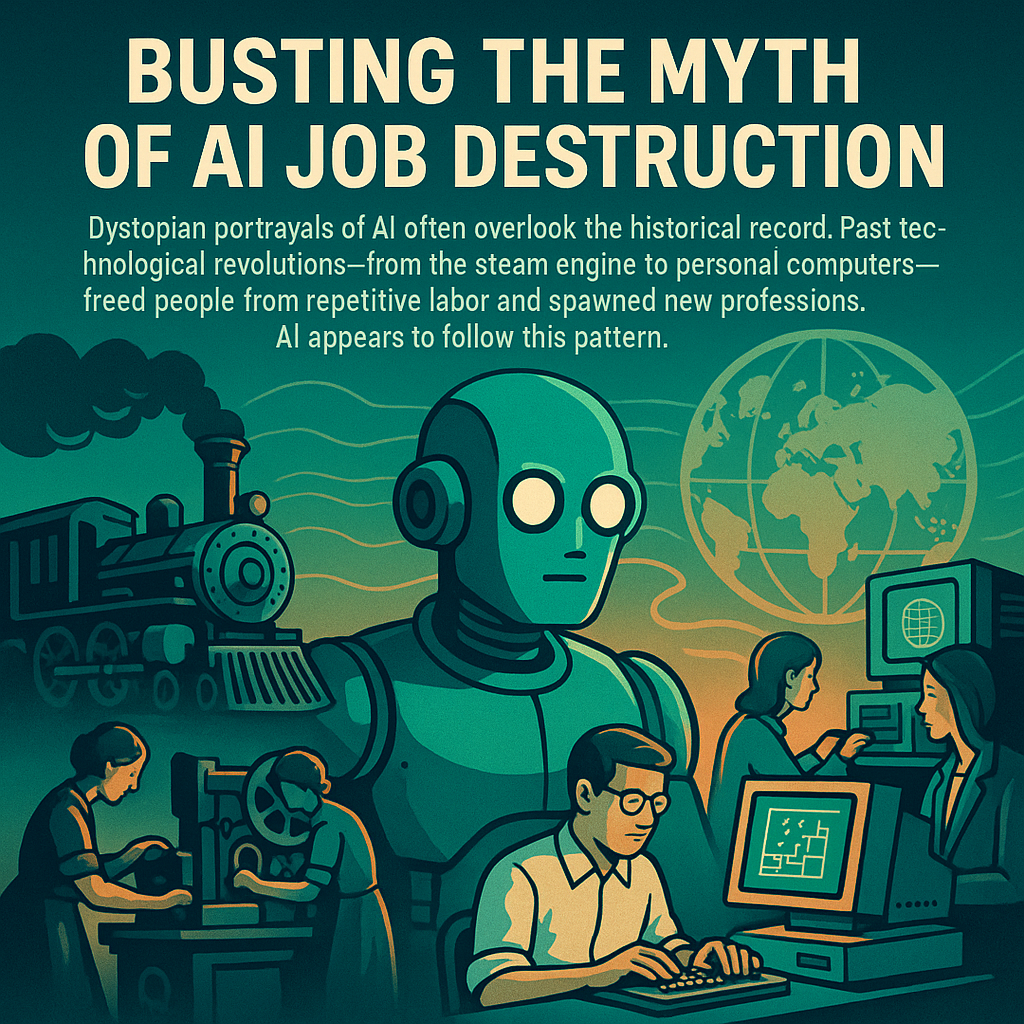
Dystopian portrayals of AI often overlook the historical record. Past technological revolutions—from the steam engine to personal computers—freed people from repetitive labor and spawned new professions. AI appears to follow this pattern.
According to the World Economic Forum’s Future of Jobs 2025 survey, AI is considered the top driver of job growth[1]. While certain roles may automate away, the need for human oversight, creativity and integration will rise.
Glassdoor data (summarized by ABC News) shows that AI‑specific job listings more than doubled between 2023 and 2024 and grew another 56 percent in early 2025[1].
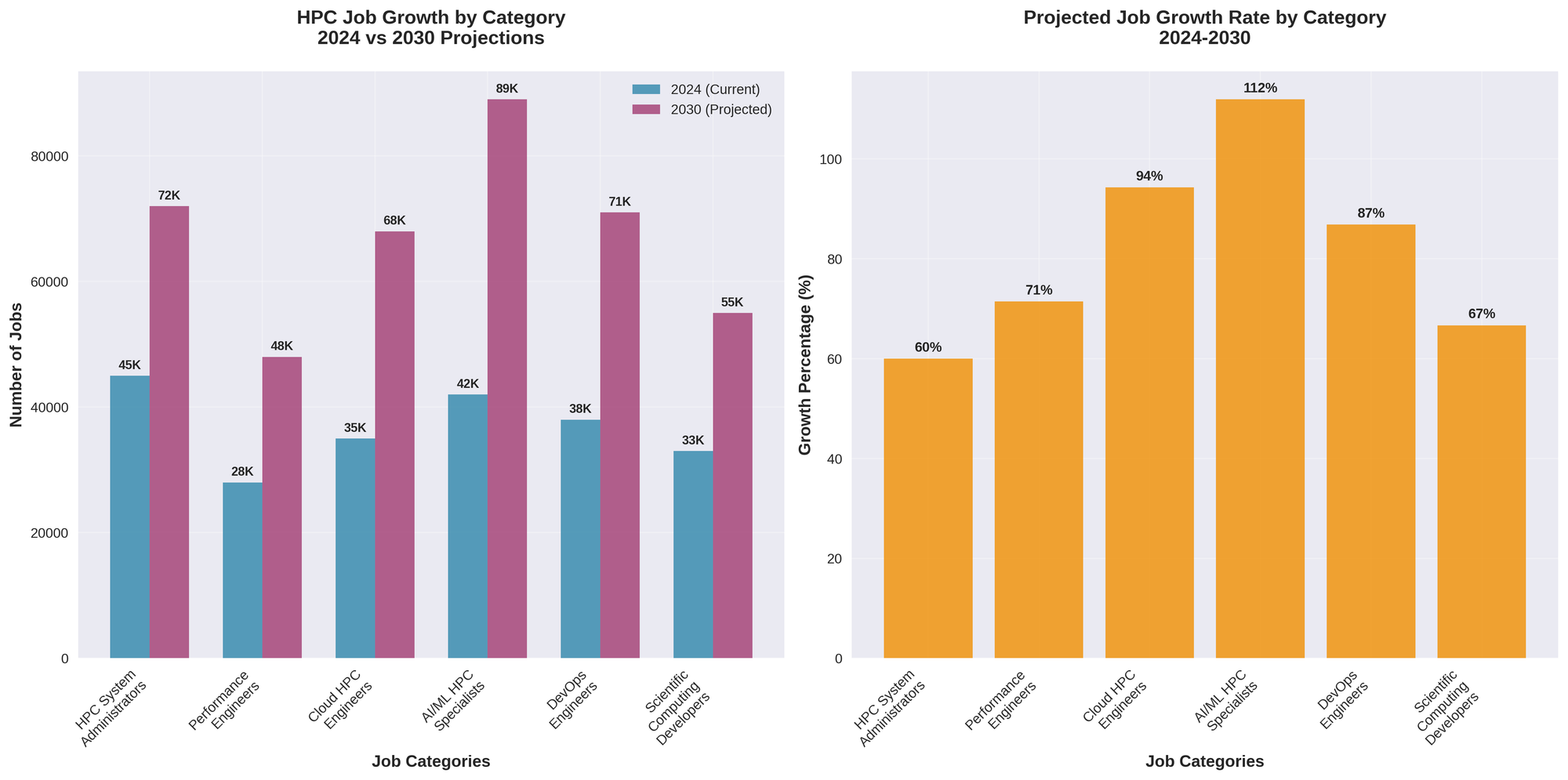
Government statistics support this optimistic outlook. The U.S. Bureau of Labor Statistics projects that employment for computer and information research scientists—a category encompassing many HPC practitioners—will grow by 26 percent from 2023 to 2033, adding roughly 9,400 new jobs[6].
Data center employment has also exploded: the U.S. Census Bureau reports that jobs in data processing and hosting increased from 306,000 in 2016 to 501,000 in 2023, a 63.7 percent rise[5].
Those positions include system administrators, network engineers, hardware technicians and software developers who maintain the very infrastructure enabling AI and crypto operations.
Skeptics might argue that these gains are offset by automation. Yet the wages tell a different story.
A study by the National Science Foundation found that STEM graduates with practical HPC skills earn starting salaries about 7–15 percent higher than peers without such training and contribute around $10 million in economic value each year[8].
Skilled HPC professionals command premium pay because their expertise is scarce and critical.
Emerging Roles and Skill Demands
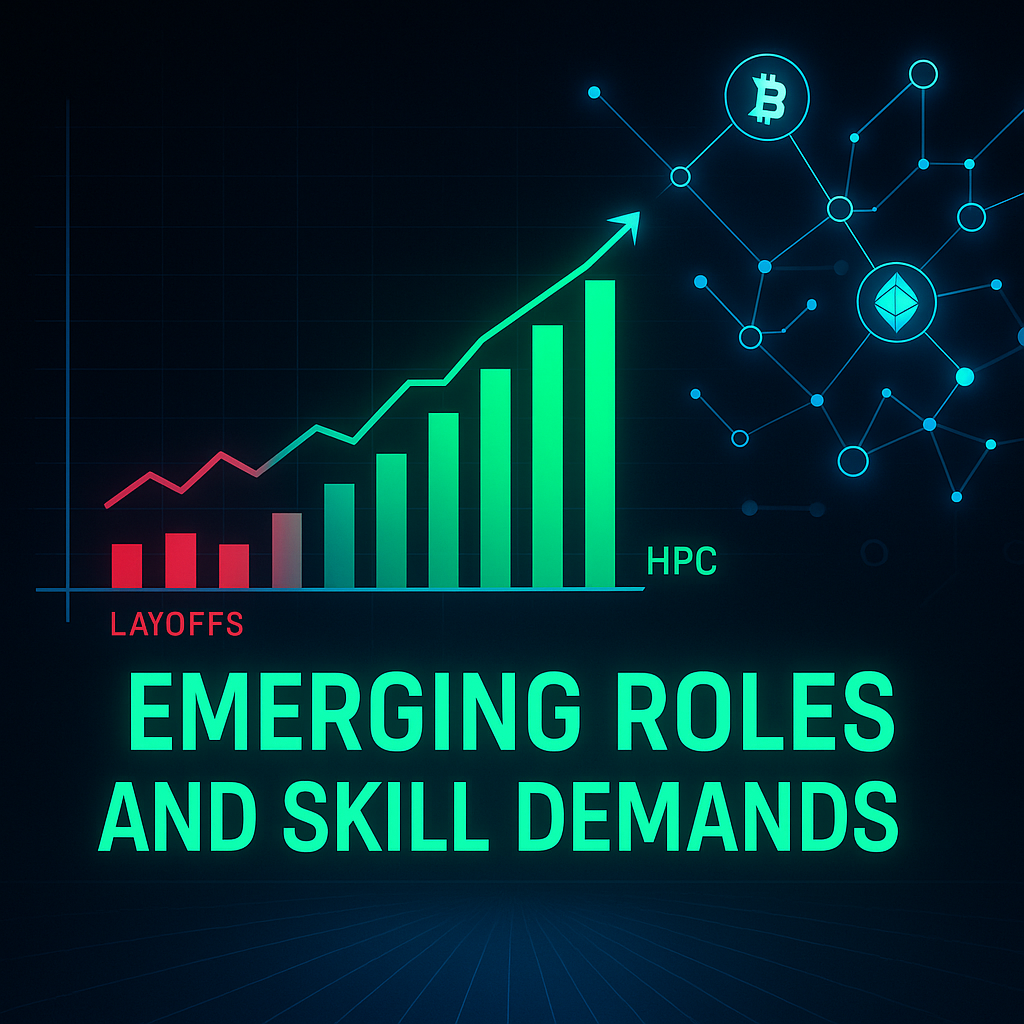
Modern HPC environments are multidisciplinary. Today’s supercomputing centers employ not just system architects and hardware engineers but also data scientists, software developers, performance analysts, cloud specialists, and AI/ML infrastructure experts. The table below summarizes common roles and the skills they require.
| Role | Primary Functions | Key Skills |
|---|---|---|
| System Administrator | Maintain HPC clusters, manage operating systems, schedule jobs, ensure uptime and security | Linux/Unix administration, shell scripting, job schedulers, security hardening |
| Performance Engineer | Analyse code to optimise speed and resource usage; benchmark applications; tune kernels | C/C++, Fortran, parallel profiling tools, numerical algorithms, GPU optimisation |
| Cloud HPC Engineer | Design and deploy HPC workloads on cloud platforms; manage hybrid architectures | AWS/Azure/GCP services, container orchestration, networking, cost optimisation |
| AI/ML Specialist | Build and deploy ML models on HPC clusters; integrate AI frameworks into scientific workflows | Python, PyTorch/TensorFlow, CUDA, distributed training libraries, data pipelines |
| DevOps Engineer | Automate deployment pipelines, monitor infrastructure, ensure reproducible environments | CI/CD tools, containerization (Docker/Singularity), Terraform, Ansible, observability |
| Scientific Developer | Develop simulation codes for research domains such as physics, genomics or climate science | Parallel programming (MPI/OpenMP), numerical methods, domain knowledge, visualization |
The demand for these skills is visualized in a skills heatmap (see below). Each row represents a role and each column a skill category. Darker cells indicate higher demand. Notice how core capabilities—Linux administration, programming languages like Python and C++, container technologies, cloud platforms, networking, GPU computing and parallel programming—cut across multiple roles.
The broad spread of dark regions in the heatmap illustrates that HPC professionals must be versatile. No single expertise suffices; success involves blending software engineering with hardware awareness, performance tuning with DevOps practices, and AI frameworks with scientific computing. Employers prize individuals who can navigate this complex landscape. As we will see, crypto miners entering the AI/HPC arena already possess many of these transferable skills.
Crypto Mining’s Pivot to AI and HPC
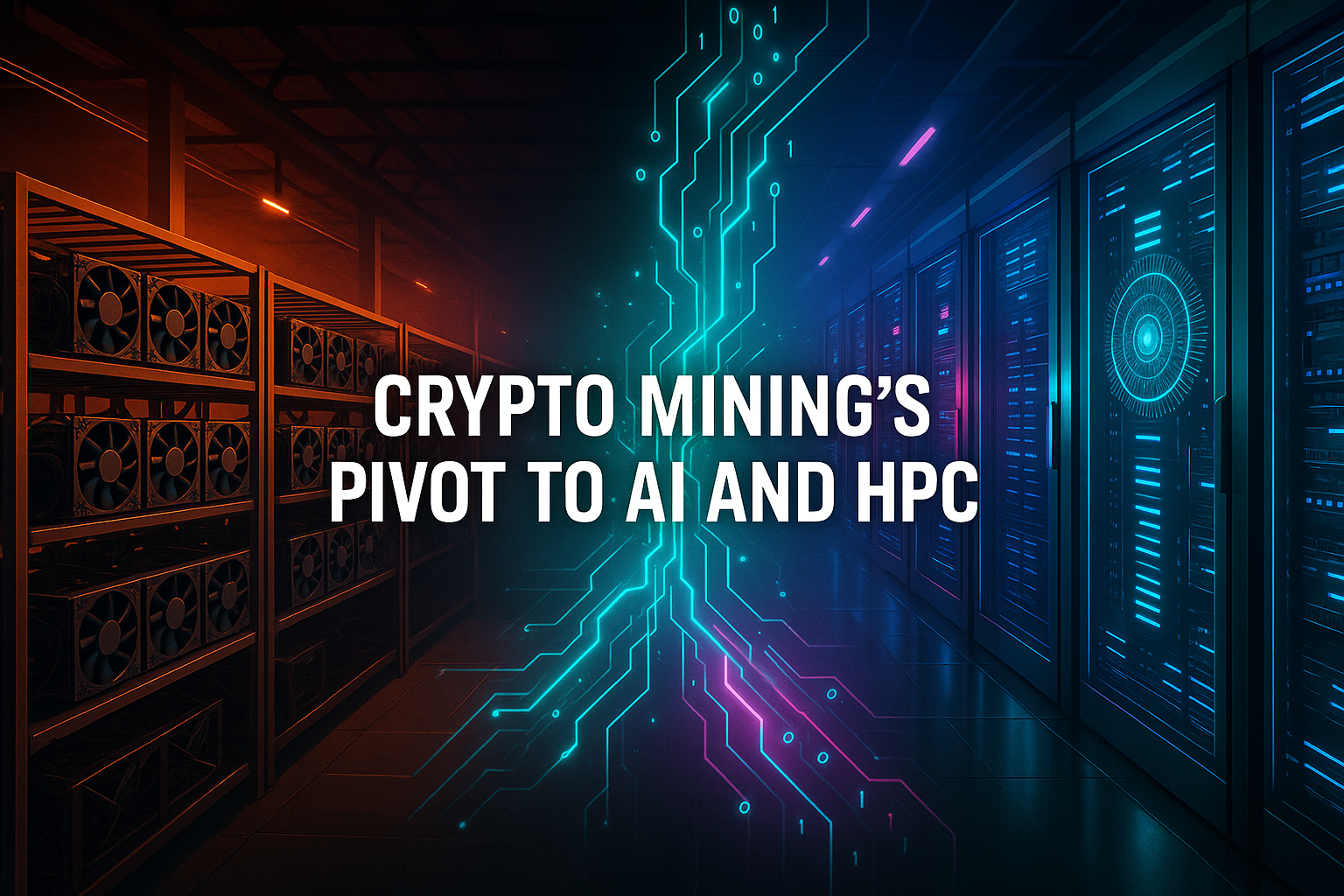
The Halving Trigger
Every four years, Bitcoin undergoes a “halving” that cuts block rewards in half. The April 2024 halving reduced the reward from 6.25 to 3.125 bitcoins per block, squeezing miners’ revenue.
At the same time, governments in North America and Europe introduced energy‑use regulations and environmental taxes on mining operations. As a result, the once‑lucrative business of running rows of ASIC or GPU rigs suddenly looked fragile.
The datacenters.com report notes that by mid‑2025, many miners had started repurposing their GPU‑rich mining farms into AI‑focused HPC data centers[9].
Two macroeconomic trends accelerated this shift.
First, AI adoption spiked across industries, creating an insatiable demand for compute. Second, investors and creditors demanded steady returns that the volatile crypto market could no longer guarantee[9].
Rather than liquidate infrastructure at fire‑sale prices, miners realized they could rent out their GPUs to train AI models, effectively becoming HPC service providers. The analogy to dial‑up vs fiber applies here: idle mining rigs are like outdated modems, while GPU clusters configured for AI are high‑speed fiber lines powering the digital economy.
Case Studies
Several notable mining companies have publicly pivoted to AI/HPC:
- Core Scientific converted a portion of its mining facilities into bare‑metal AI servers and signed a $3.5 billion, 12‑year deal to provide AI hosting for a tech firm. This long‑term contract revived the company after it emerged from bankruptcy[9].
- Bitfarms retrofitted a mining site into an AI training center, diversifying its revenue streams. The company still mines bitcoin but treats HPC as a hedge.
- Hive Digital Technologies announced that its AI services segment tripled revenue after installing new GPUs; the firm’s AI unit now accounts for nearly 9 percent of total revenue[9].
- Marathon Digital Holdings explored building dedicated AI data centers adjacent to mining farms, taking advantage of existing power contracts and cooling systems[9].
- Morphware AI is a Paraguay based LLM AI training platform that mines BTC with excess electricity.
See more about the case studies here:
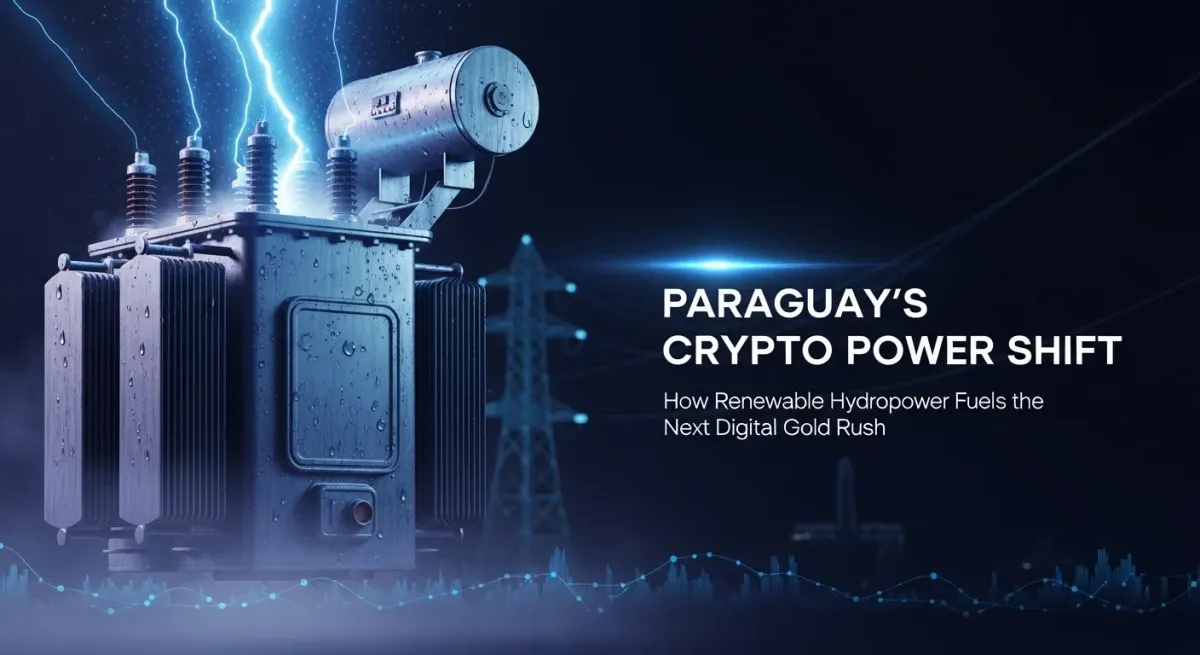
Read About the Cheapest HPC Costs in the World
Miners are not abandoning crypto, but rather supplementing it with AI‑centric services. Customers include start‑ups training language models, research institutions running simulations, and enterprises needing on‑demand HPC. For miners, this new line of business offers more predictable cash flows and resilience against crypto price swings.
Risks and Challenges

The transition is not without obstacles. The datacenters.com report lists several risks: capital intensity, talent gaps, client acquisition, unpredictable AI workloads, and reputational baggage[9].
GPUs used for crypto may not be optimized for AI workloads, requiring new procurement. Skilled engineers capable of configuring HPC clusters are in short supply. Mining firms must also build relationships with AI clients, a different customer base than crypto traders. Finally, communities still skeptical of crypto may question whether miners can pivot successfully.
Governments are aware of these challenges and are creating incentives for transitions. Some jurisdictions offer tax credits for converting mining facilities to AI/HPC; others fund retraining programs for technicians. Private equity firms are acquiring distressed mining assets to build AI data centers, accelerating the trend[9]. For miners, the message is clear: adapt or be left behind.
Government and Industry Investment: Fueling Job Growth
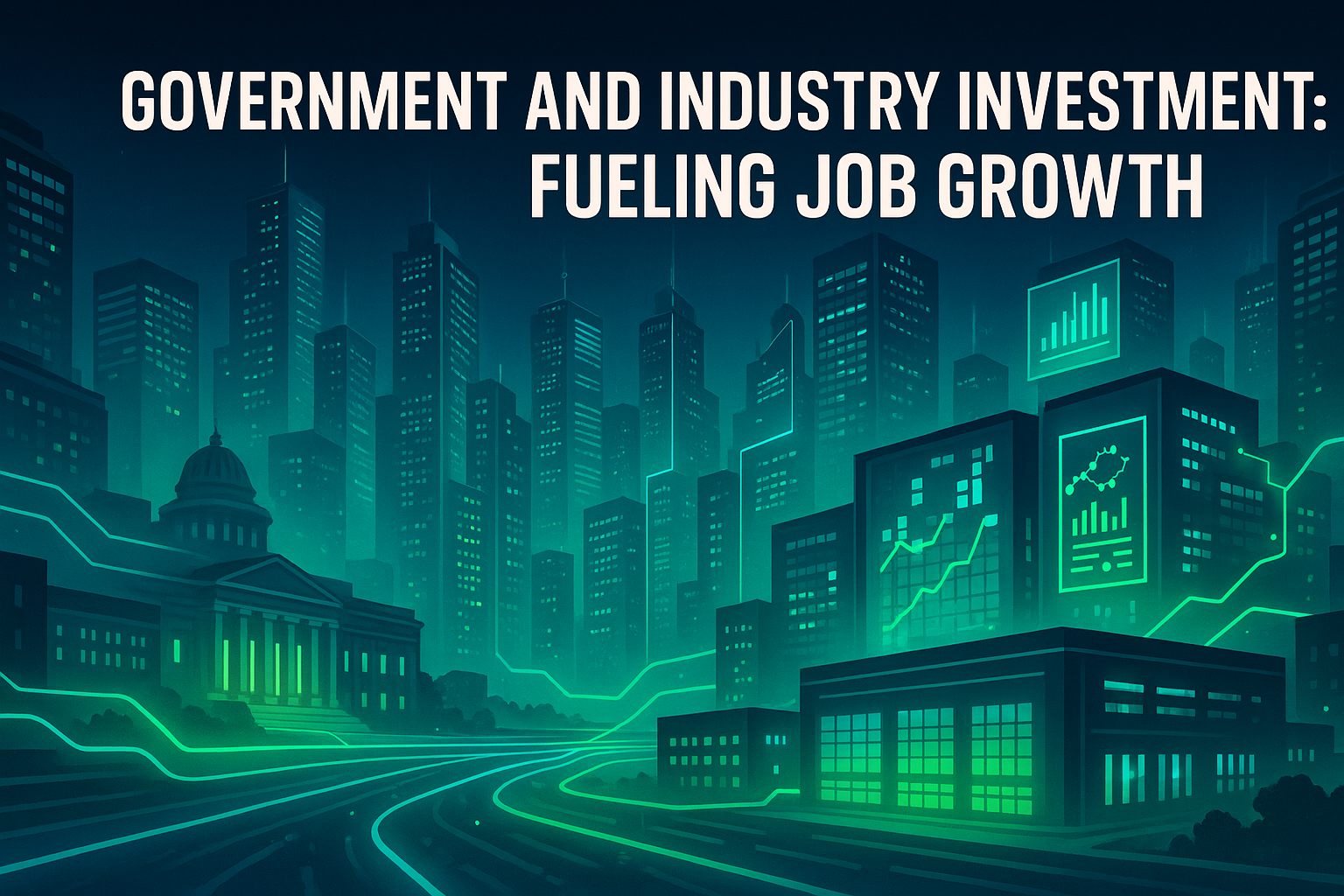
Historically, large‑scale computing projects have been tied to public investment. The CHIPS and Science Act in the United States is a prime example.
It has sparked over $630 billion in semiconductor supply chain investments, creating or supporting more than 500,000 jobs, including 69,000 permanent facility positions and 122,000 construction jobs[7].
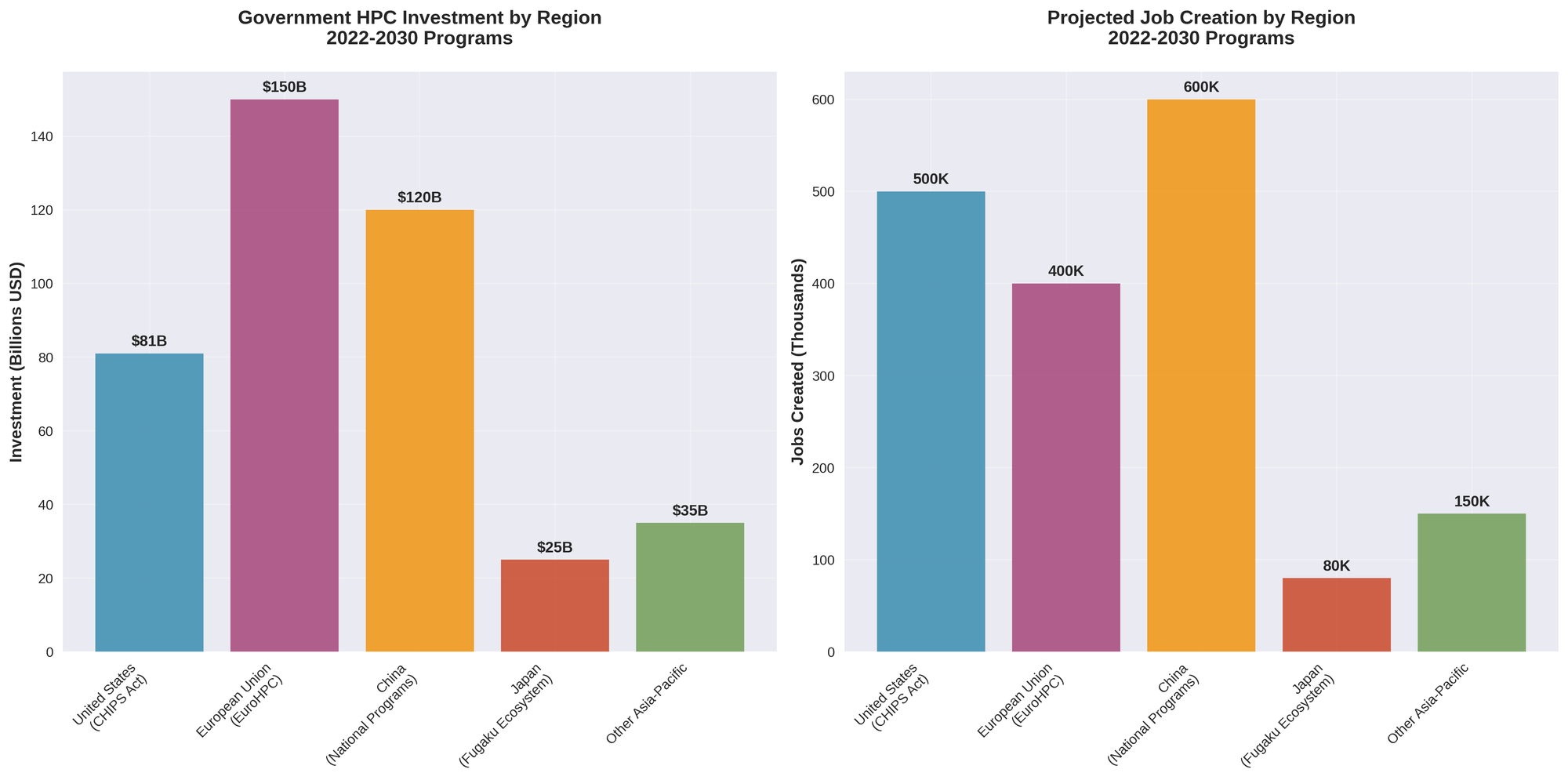
These facilities need engineers, technicians, project managers, electricians and safety inspectors. Many of these roles directly support HPC infrastructure by producing the chips used in supercomputers.
Regional initiatives mirror this trend. Memphis’ decision to host xAI’s Colossus supercomputer is one of Tennessee’s largest technology investments.
According to the local chamber of commerce, xAI will bring up to 500 high‑paying jobs in the project’s initial phase[10] and has already paid tens of millions of dollars in local tax revenue, with expectations of exceeding $100 million next year[10].
The company encourages local vendors to participate through a request‑for‑proposal portal, ensuring that the economic benefits flow to nearby businesses[10].
By hosting a world‑class AI supercomputer, Memphis positions itself as a “Digital Delta,” attracting ancillary companies in hardware manufacturing, software development and clean‑energy infrastructure.
Elsewhere, states like Ohio, Texas and North Carolina are investing in data center corridors that leverage cheap land and abundant renewable energy.
The Census Bureau notes that California accounts for about 17 percent of U.S. data‑center employment, while Texas holds around 10 percent[5].
With the growth of AI and edge computing, these hubs will continue to expand. Each new facility requires thousands of workers during construction and hundreds of permanent staff once operational.
Challenges and Solutions: Bridging the Skills Gap
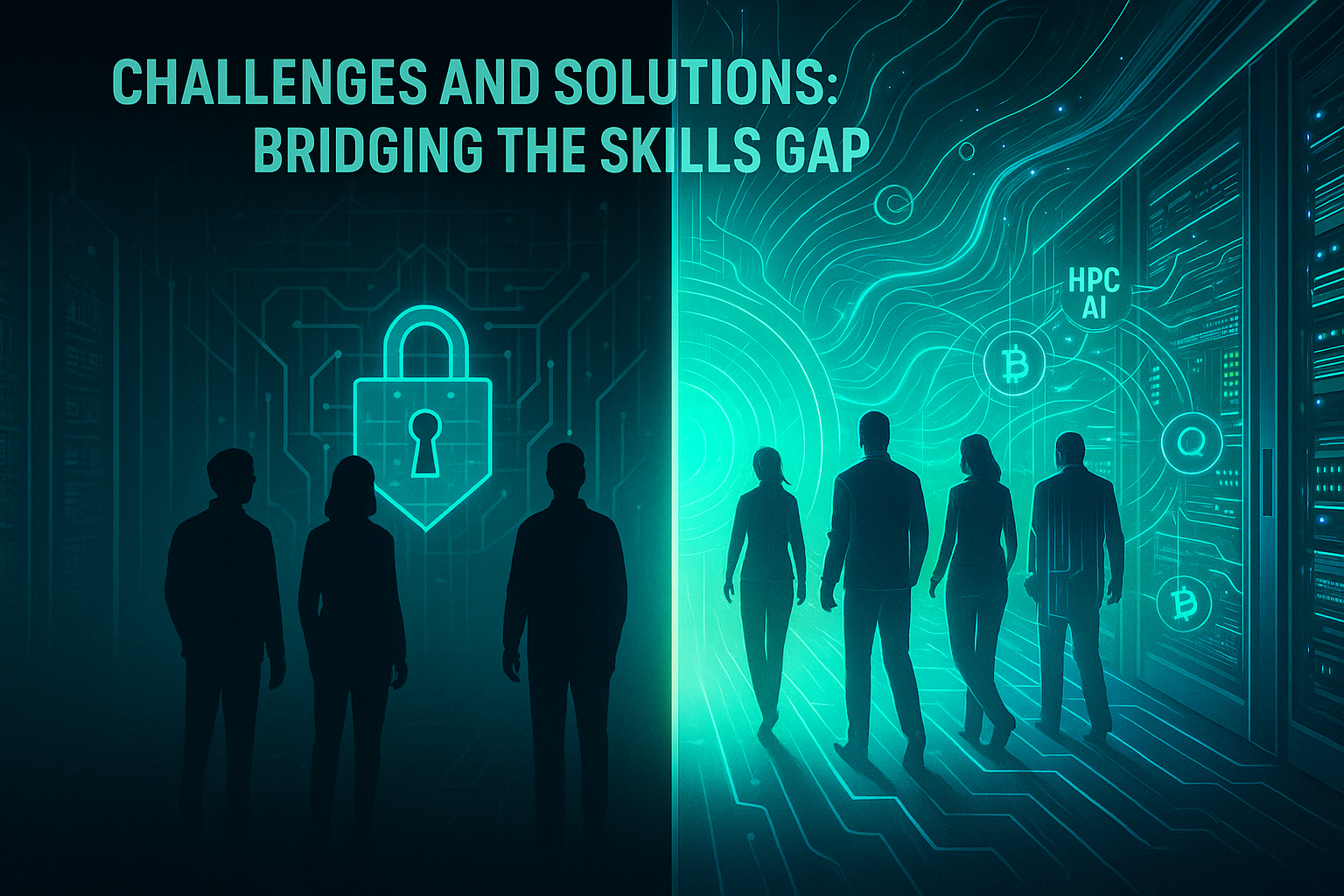
Even with robust investment, a major barrier threatens HPC job growth: the skills gap. In their review of 1,000 STEM job postings and employer surveys, R&D World reported that 63 percent of companies cite skill gaps as the primary barrier to business transformation, while only 29 percent expect talent availability to improve by 2030[2].
Meanwhile, 86 percent of respondents expect AI and information‑processing technologies to transform their business[2]. The mismatch between technological ambition and workforce readiness could slow progress if left unaddressed.
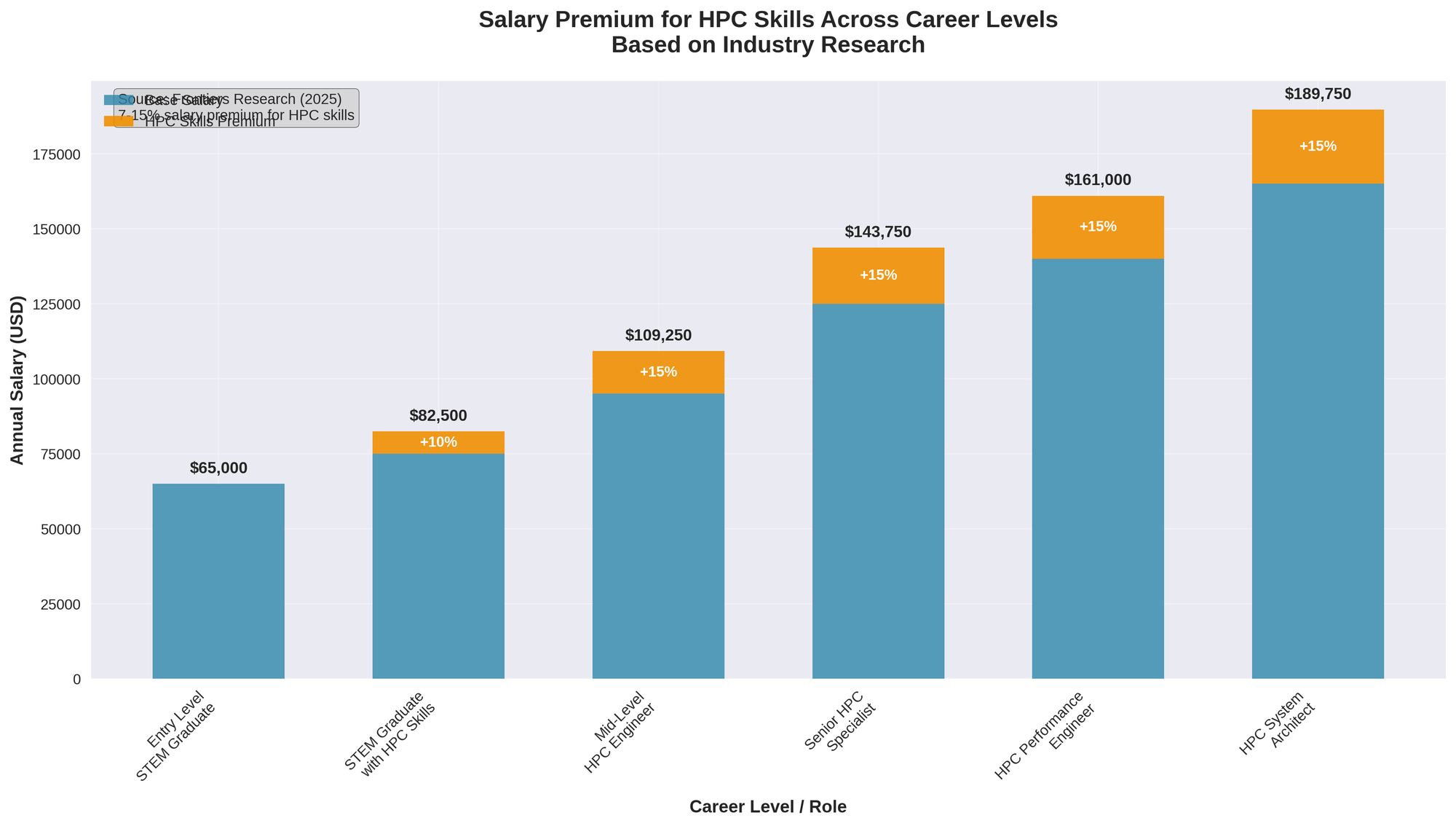
Educational institutions and employers must therefore act together. Several strategies are already proving effective:
- Applied training programs. Universities and community colleges are launching HPC apprenticeships and AI bootcamps that give students hands‑on experience with cluster configuration, container orchestration and GPU programming. Scholarships funded through the CHIPS Act and private foundations make these programs accessible to underrepresented communities. The goal is not just to teach theory but to produce job‑ready practitioners.
- Cross‑training for crypto technicians. Former miners and data‑center operators already understand power management, cooling and hardware maintenance. With short courses on Linux, Python and AI frameworks, these workers can transition into roles such as AI infrastructure technician or HPC operations engineer. Retraining leverages existing skill sets and keeps talent within the region.
- Upskilling through on‑line certificates. Digital platforms like Coursera, edX are the most cost-efficient, and specialized HPC portals offer modular courses on parallel programming, distributed training, Kubernetes and GPU optimization. Many employers reimburse employees for such courses, viewing it as an investment in their own productivity. IBM, Google, and Nvidia also offer courses on their LLM infrastructure, training, and deployment. YouTube has emerged as a popular learning and tutorial platform for many consuming digital content. And with the help of AI, just about anything can be learned.
- Encouraging diversity. The Census Bureau notes persistent gender gaps in data‑center employment[5]. To fill the projected 100k+ new roles in HPC and AI, industry leaders must tap the full talent pool. Scholarship programs targeted at women, minorities and rural students can help bridge this gap.
- Partnerships with national labs. U.S. national laboratories (e.g., Oak Ridge, Argonne, Lawrence Livermore) and European supercomputing centers offer internships and residencies. Working alongside veteran scientists, trainees gain exposure to real‑world applications, from climate modeling to quantum chemistry.
Bridging the skills gap requires more than coursework; it demands a cultural shift. Employers must accept that hiring a perfect candidate may be impossible. Instead, they can recruit individuals with strong fundamentals—problem solving, coding basics, teamwork—and invest in training them on HPC specifics. Such an approach pays dividends; the National Science Foundation study highlights that individuals with HPC skills not only earn more but also contribute millions in additional economic value[8].
Opportunities for the Crypto Community
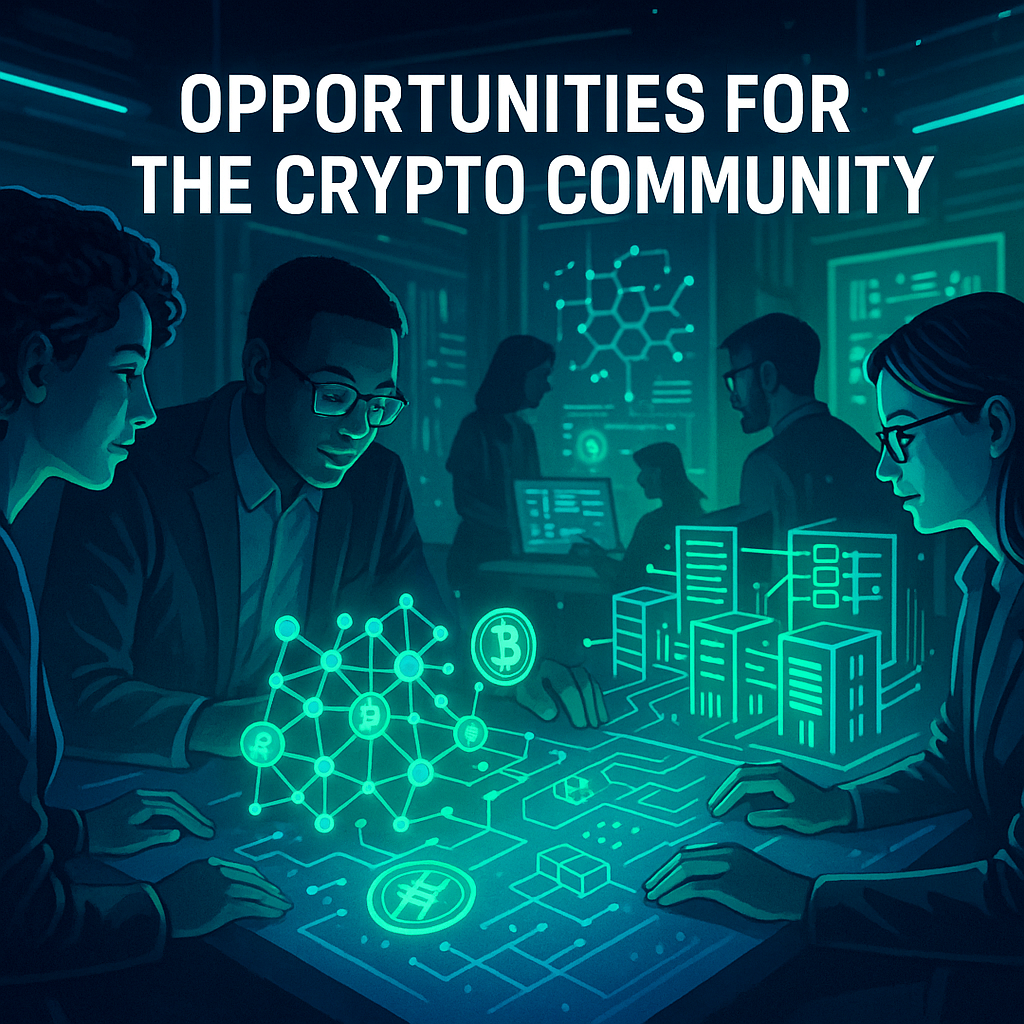
The marriage of crypto and HPC offers unique opportunities. Beyond repurposing mining rigs, distributed ledger technology can enhance HPC infrastructure, and HPC can advance blockchain applications.
- AI‑powered crypto research. HPC clusters enable quantitative researchers to run complex simulations of blockchain protocols, stress‑test consensus algorithms and model token economies. This fosters more robust and scalable networks.
- Edge computing and decentralized AI. Emerging projects propose distributed AI training across a network of nodes. Instead of centralizing data, they break training jobs into shards executed on miners’ hardware. Participants earn rewards in crypto tokens. HPC expertise is essential to orchestrate these decentralized workflows.
- Sustainable mining. AI algorithms running on HPC systems can optimize power usage and cooling strategies for mining equipment, reducing carbon footprints. GPUs originally purchased for mining can be used for research projects during off‑peak hours, earning dual revenue streams.
- Crypto‑HPC hybrids. Some start‑ups are developing blockchain‑based marketplaces where businesses can rent HPC resources from idle data centers, paying in cryptocurrency. Smart contracts manage resource allocation and payments securely. This business model transforms miners into nodes in a decentralized supercomputer network.
The combination of crypto’s decentralized ethos and HPC’s performance capabilities could spawn entirely new industries. Miners who adapt to these opportunities will be well positioned for the AI‑heavy future.
Future Outlook: Toward 2030 and Beyond
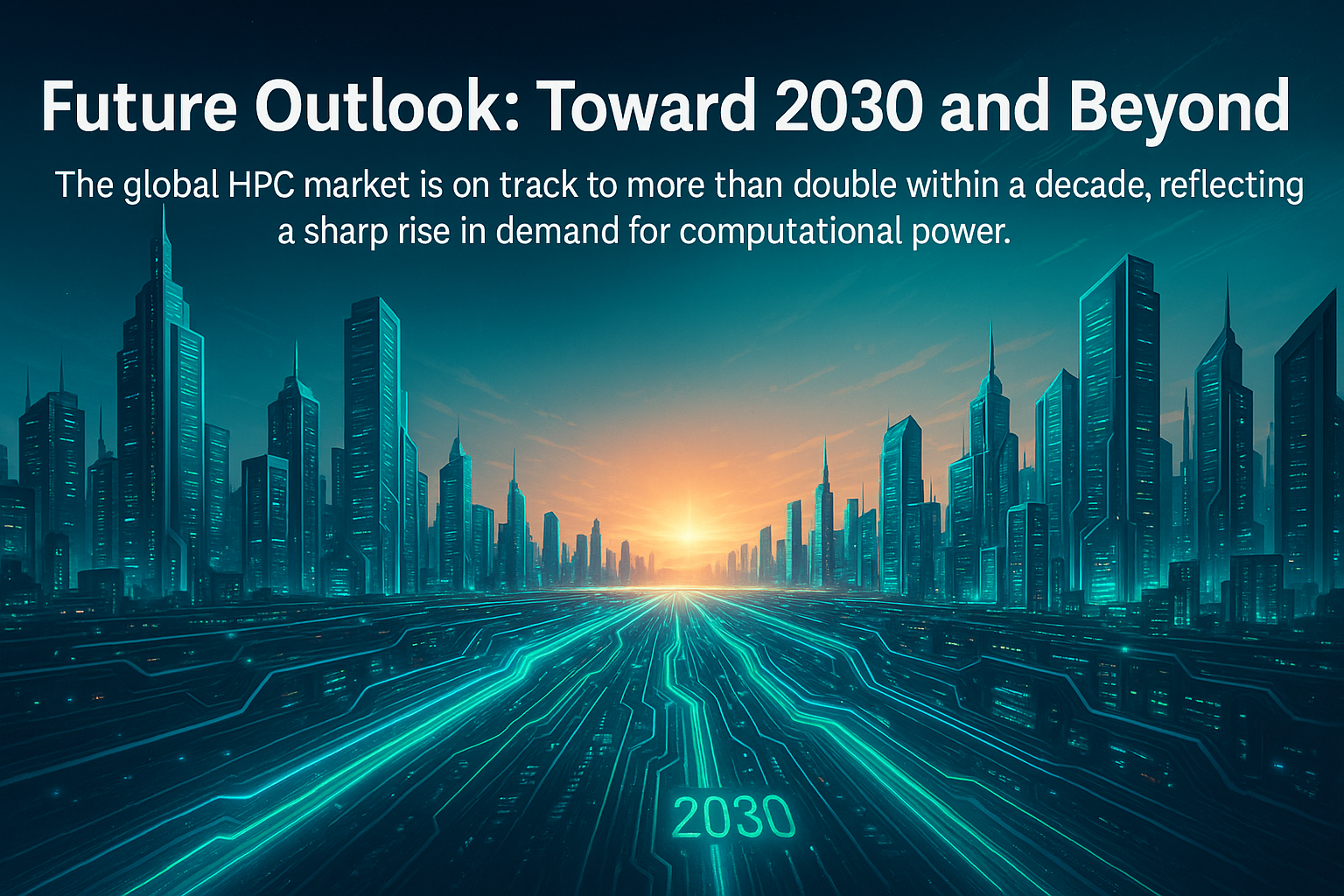
It is reasonable to ask whether current projections—tens of millions of AI‑driven jobs—will hold. Several converging factors suggest they may even be conservative.
The global HPC market is on track to more than double within a decade, reflecting a sharp rise in demand for computational power[3].
Meanwhile, supercomputer installations like xAI’s Colossus demonstrate that local economies can attract world‑class infrastructure and hundreds of high‑paying jobs[10].
Data centers continue to proliferate, with employment rising over 60 percent from 2016 to 2023[5]. And BLS forecasts steady growth for computer and information research roles[6]. These numbers indicate momentum that goes well beyond hype.
Looking specifically at HPC careers, the next five years will see the rise of specialized roles that combine domain expertise with supercomputing skills.
Examples include AI infrastructure architect, quantum‑HPC integration specialist, edge‑HPC network engineer, green data center designer, large language model performance analyst and crypto‑HPC platform manager.
Each of these roles requires a blend of hardware knowledge, software proficiency and business acumen.
While no authoritative source predicts the exact number of new HPC jobs, extrapolating from investments, data‑center expansion and research funding suggests that well over 100,000 additional HPC and HPC‑adjacent positions could materialize globally by 2030[2].
That figure includes direct roles (e.g., system architects, developers, AI trainers) and indirect ones (e.g., facilities managers, supply chain specialists, renewable‑energy technicians).
The talent shortage highlighted by employers ensures that candidates with the right mix of skills will be in high demand.
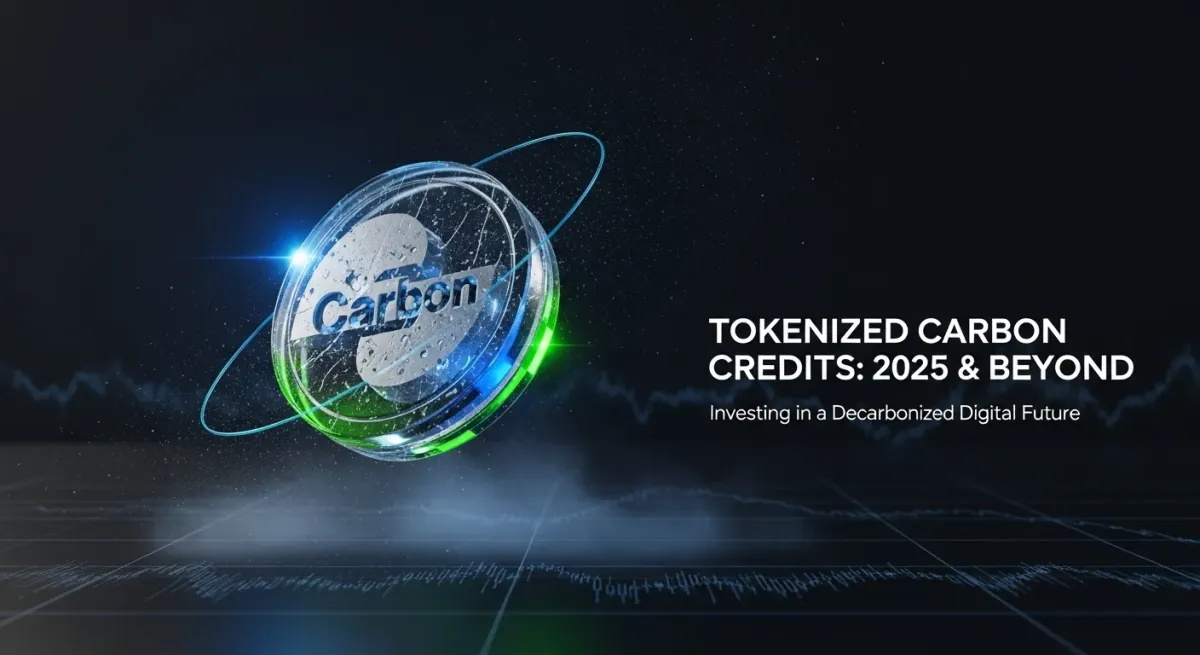
Read Our 2025 Insights for Investors on Tokenized Carbon Credits!
Conclusion: An Engine for Human Creativity and Economic Resilience
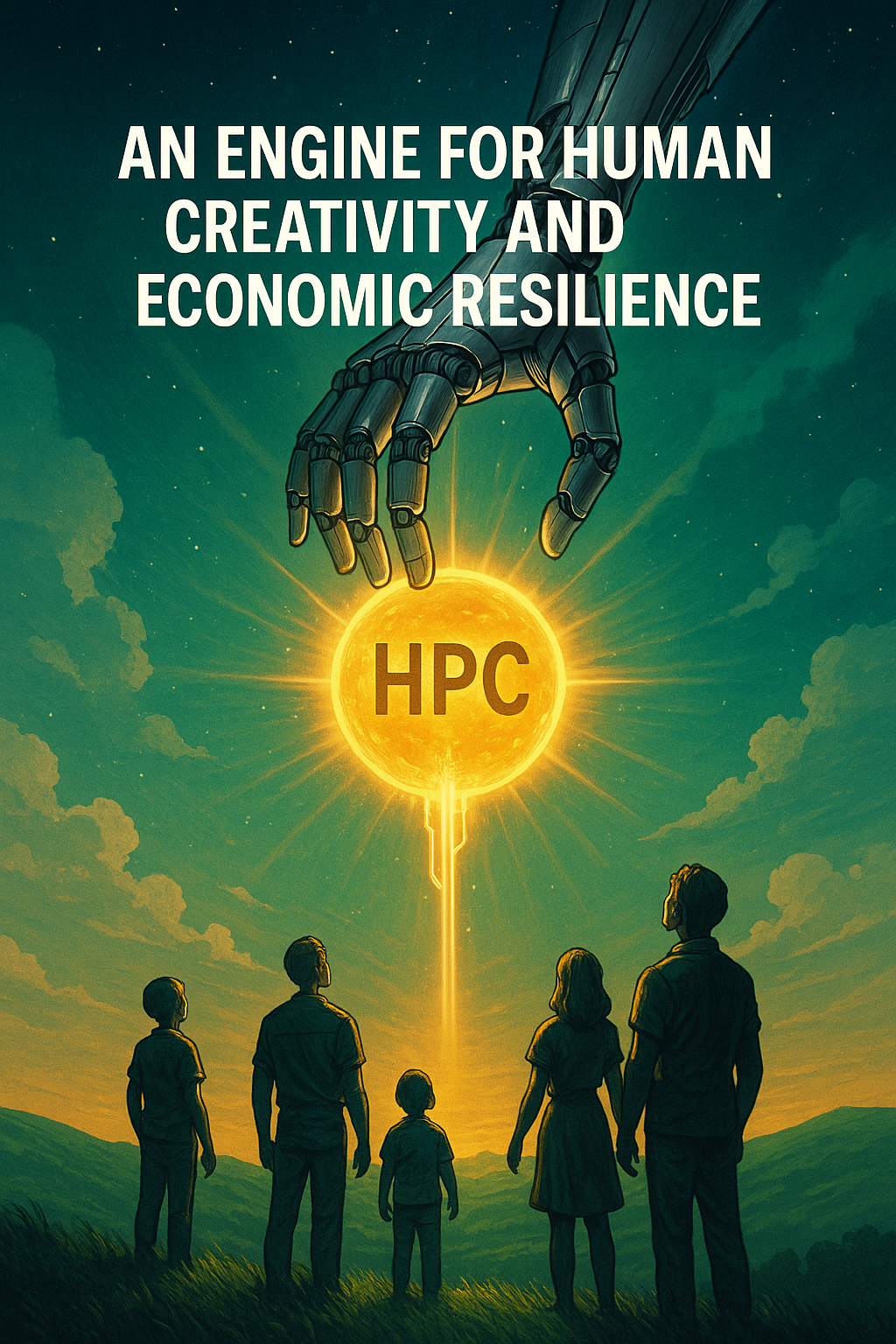
AI and high‑performance computing are not harbingers of a jobless future; they are catalysts for economic reinvention. They shift repetitive tasks to machines but free humans to focus on higher‑value work—designing experiments, interpreting results, building communities.
The World Economic Forum’s estimate of 170 million new roles underscores the magnitude of opportunity. Successful transitions, however, demand preparation [1].
Policymakers must sustain investment in chip fabrication, data centers and workforce development.
Educators need to integrate HPC principles into STEM curricula. Employers should commit to ongoing training and widen recruitment pipelines to include diverse candidates.
For crypto miners, the message is one of hope and urgency. Pivoting from mining to AI‑driven HPC is like upgrading from a rusty pickaxe to a precision laser: the tool is different, but the pioneering spirit remains.
Communities that embrace HPC will see stable revenue, energy‑efficient innovation and well‑paid jobs. Instead of fearing AI, we can harness it—using HPC as the engine powering the next evolution of both technology and the cryptocurrency ecosystem.
The path will require resilience, creativity and collaboration, but the payoff is a future where technology amplifies human potential rather than replacing it.
Sources
- ABC News, reporting on the World Economic Forum’s Future of Jobs 2025 survey: AI is the top driver of job growth, with 170 million new jobs created by 2030 and 92 million jobs displaced. AI‑specific job listings more than doubled from 2023 to 2024 abcnews.
- R&D World article summarizing WEF findings: 63 percent of companies cite skills gaps as the main barrier to transformation; only 29 percent expect talent availability to improve; 86 percent expect AI/information‑processing technologies to transform their business 6 in-demand R&D and STEM skill clusters for 2025 - Research & Development World.
- Precedence Research report: the global HPC market was $54.76 billion in 2024 and is forecast to reach $133.25 billion by 2034 (CAGR 9.3 percent) precedenceresearch.com.
- Global Market Insights: HPC market size $38.38 billion in 2023 with 6.5 percent annual growth, driven by AI/ML adoption and cloud computing gminsights.com.
- U.S. Census Bureau: Data center employment grew from 306,000 to 501,000 between 2016 and 2023 (a 63.7 percent increase); California accounts for 17 percent and Texas 10 percent of U.S. data‑center jobs census.gov.
- U.S. Bureau of Labor Statistics: Employment for computer and information research scientists will grow by 26 percent from 2023 to 2033, adding 9,400 new jobs bls.gov.
- Semiconductor Industry Association: CHIPS Act investments have spurred over $630 billion in projects, creating or supporting more than 500,000 jobs semiconductors.org.
- National Science Foundation study: Graduates with HPC skills earn 7–15 percent higher starting salaries and contribute $10 million annually in added economic value pmc.ncbi.nlm.nih.gov.
- Datacenters.com report on crypto miners pivoting to AI/HPC: Many miners repurpose GPU rigs into AI data centers due to declining block rewards and energy regulations; examples include Core Scientific, Bitfarms, Hive and Marathon; risks involve capital costs, talent gaps and unpredictability; governments and investors encourage conversions datacenters.com.
- Greater Memphis Chamber: xAI’s Colossus supercomputer project in Memphis will create up to 500 high‑paying jobs, invites local vendors to participate through an RFP portal and is expected to generate over $100 million in local tax revenue memphischamber.com.
Last Updated: 8-9-2025 | Update By: Jan.2026


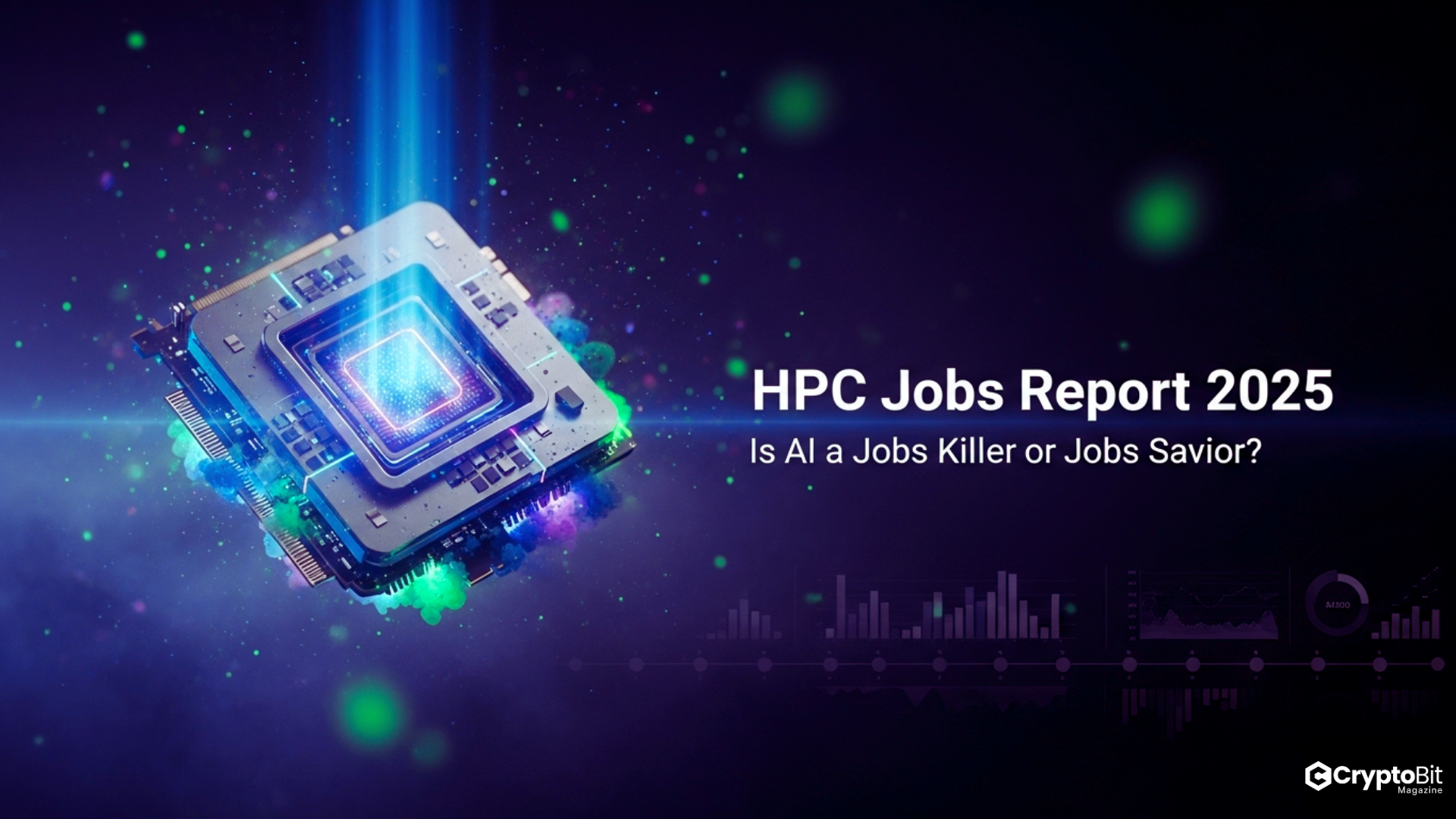



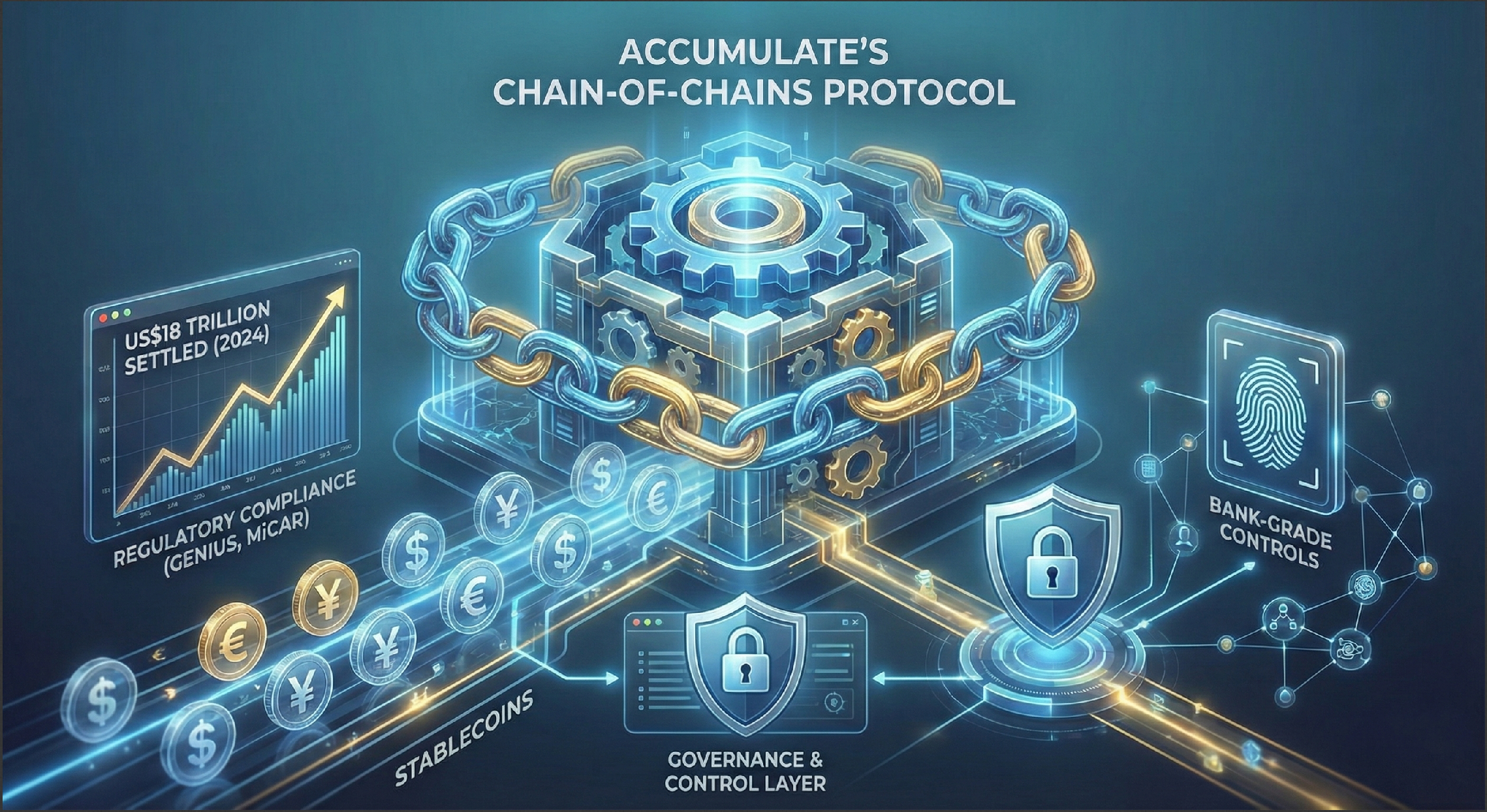
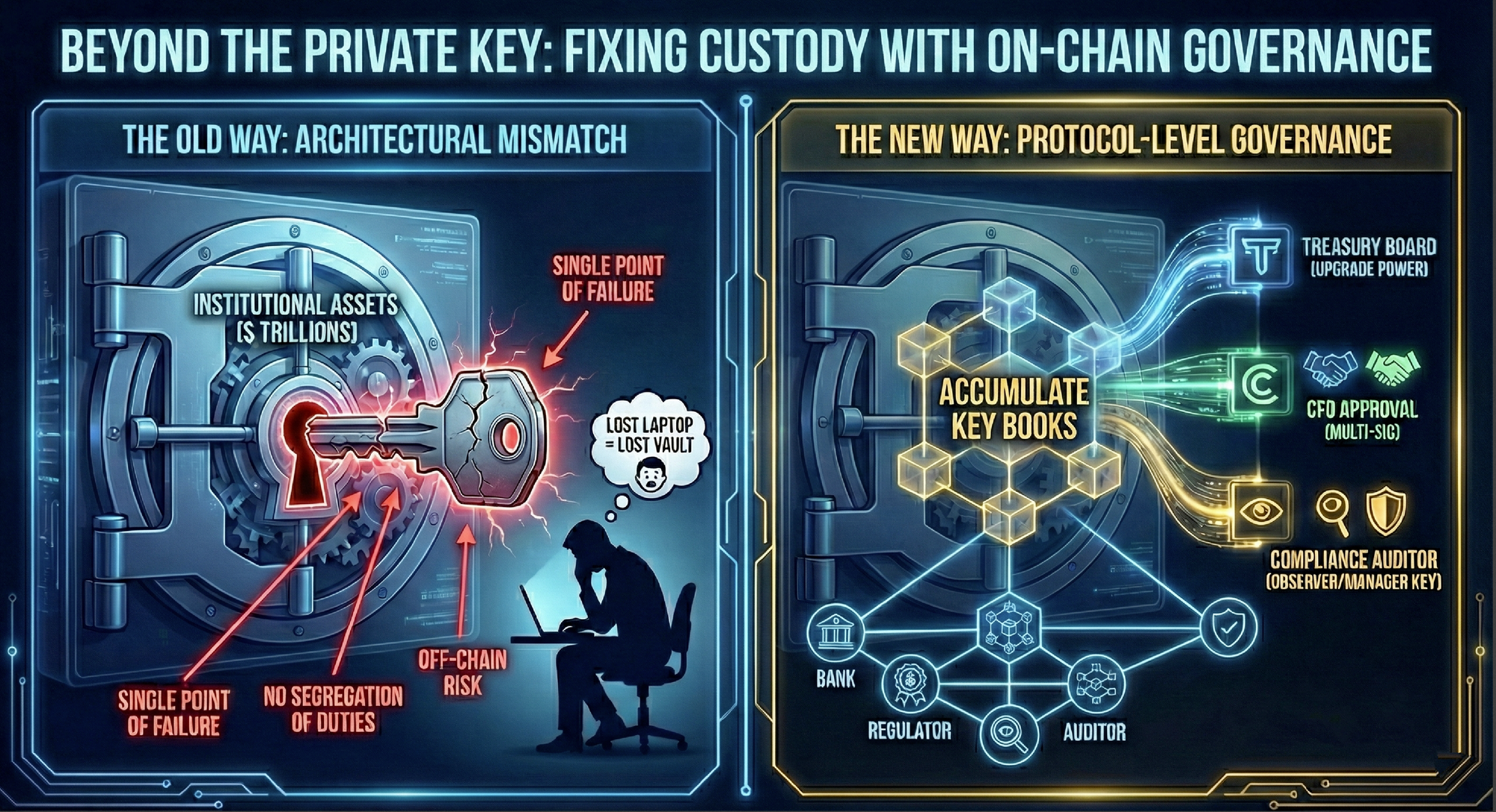
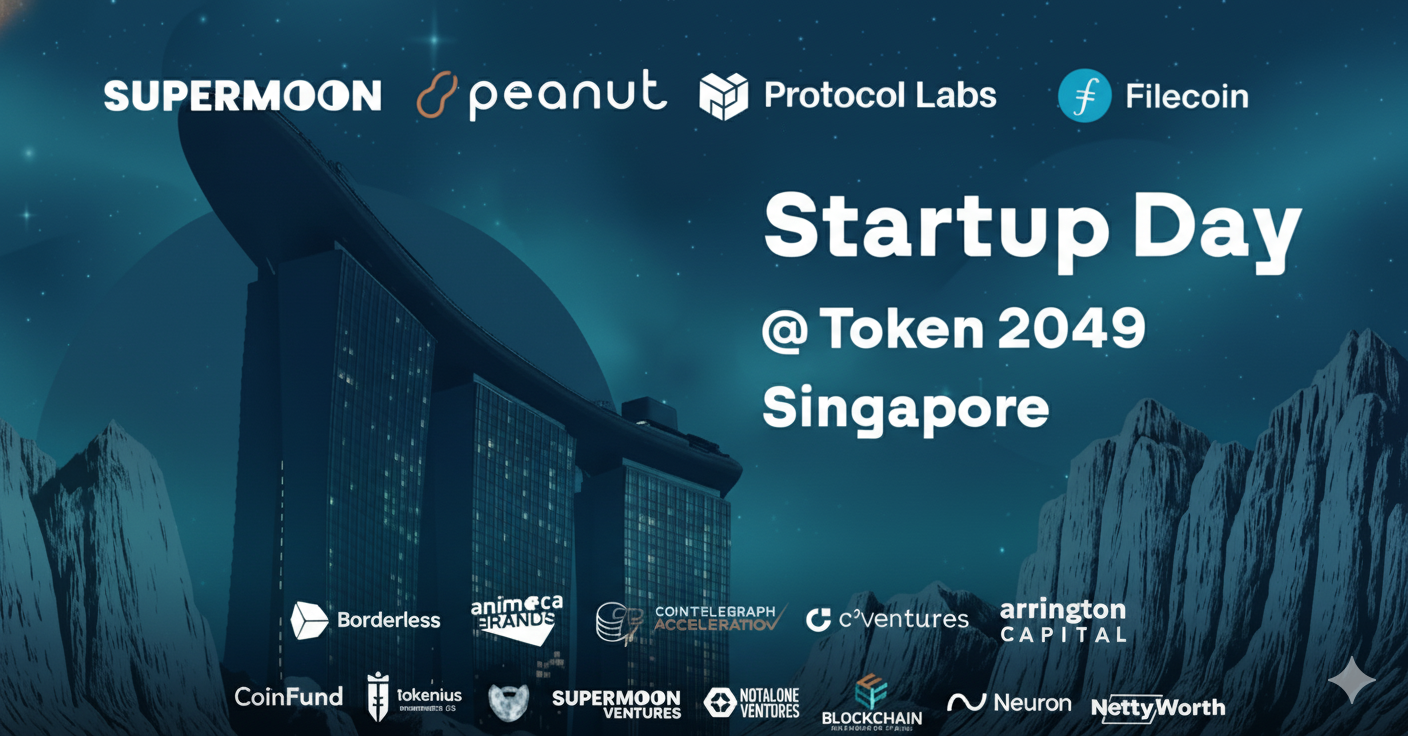

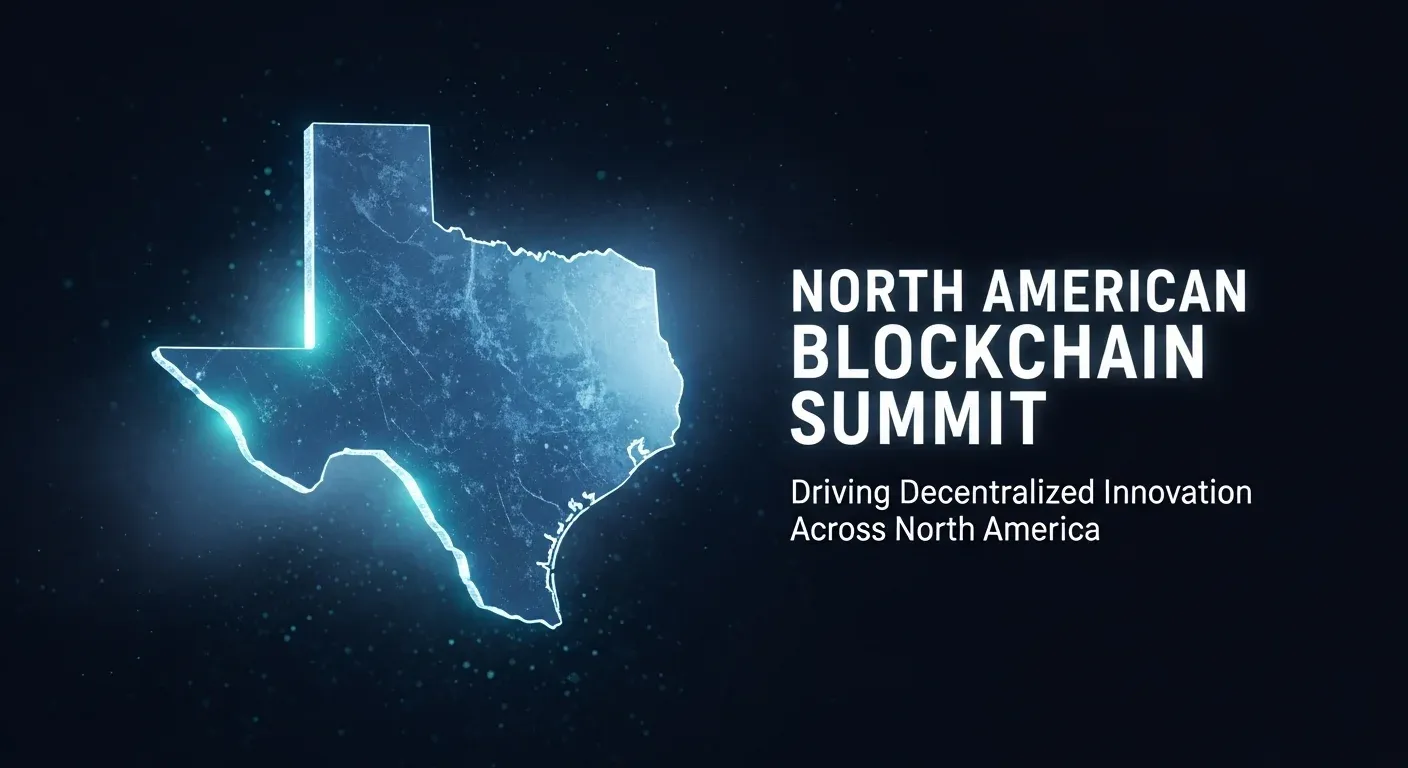

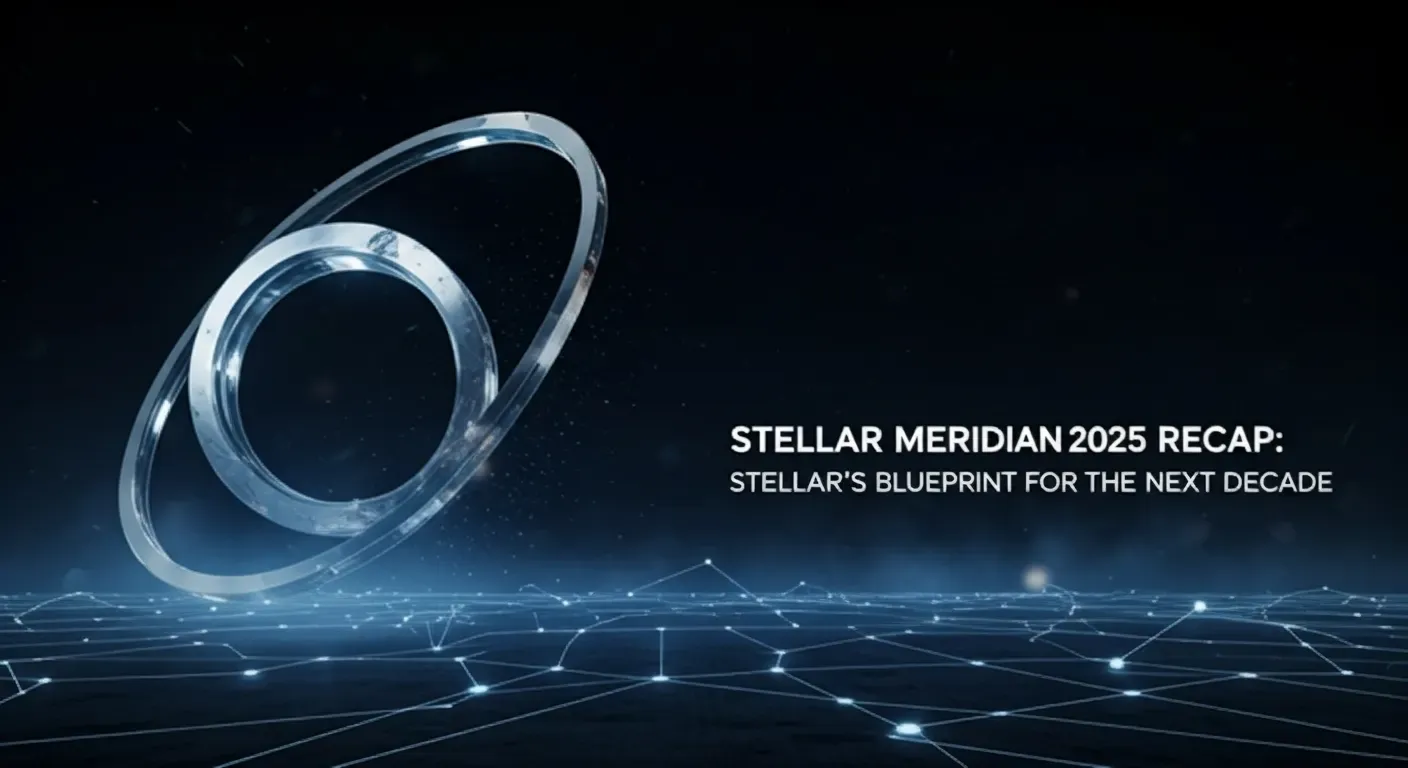



Discussion